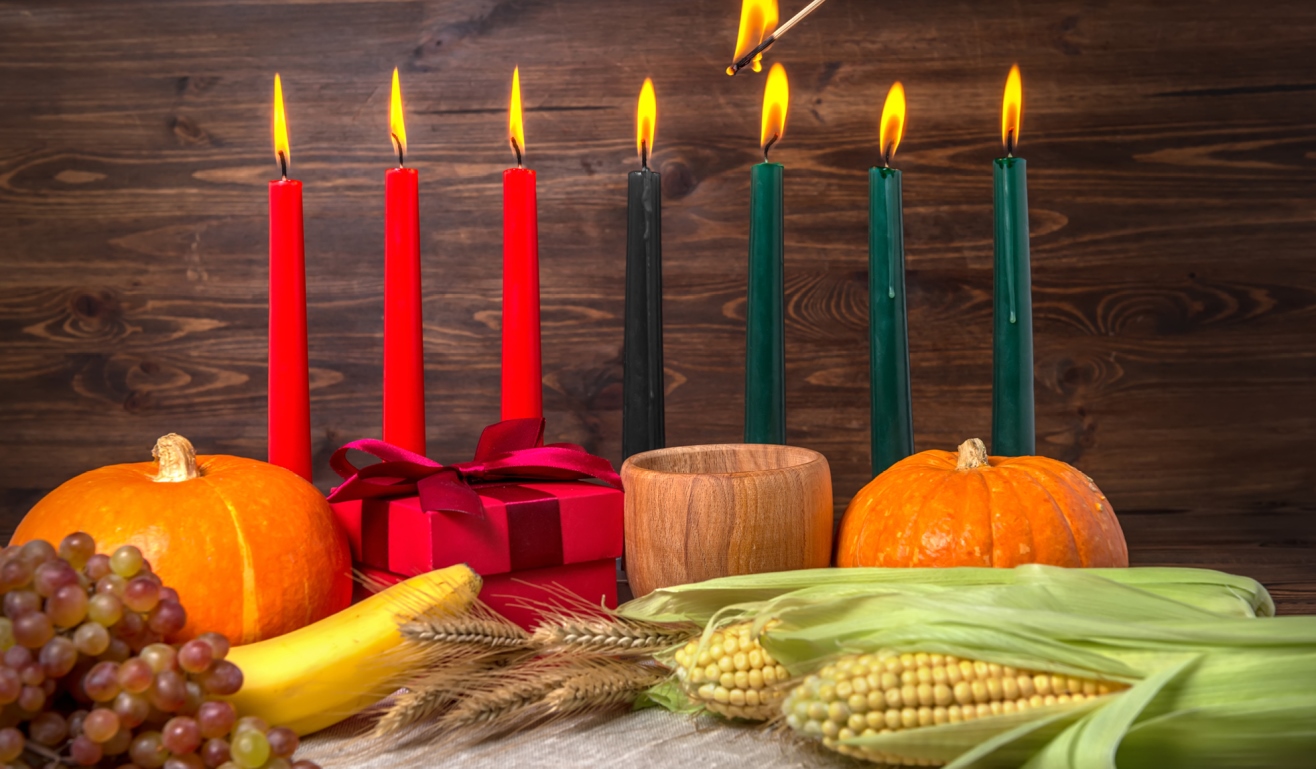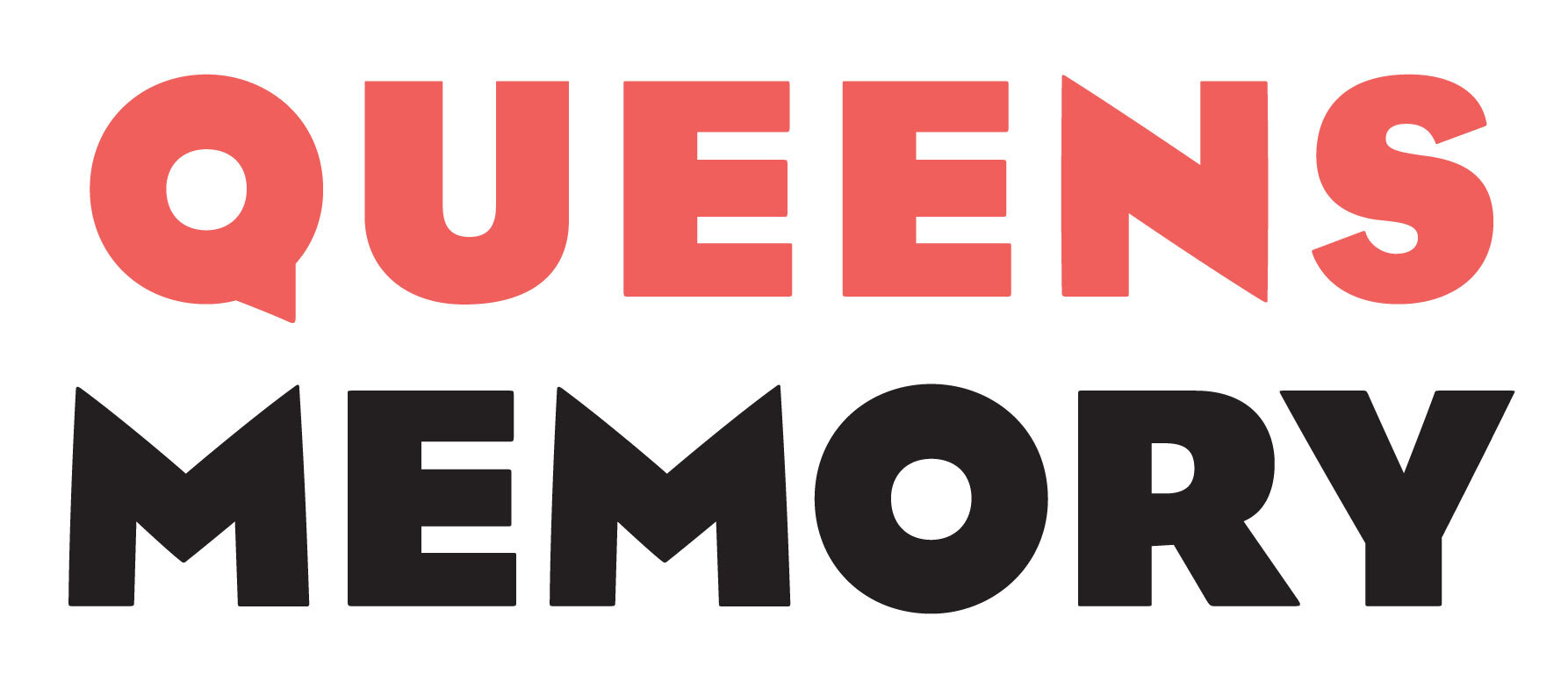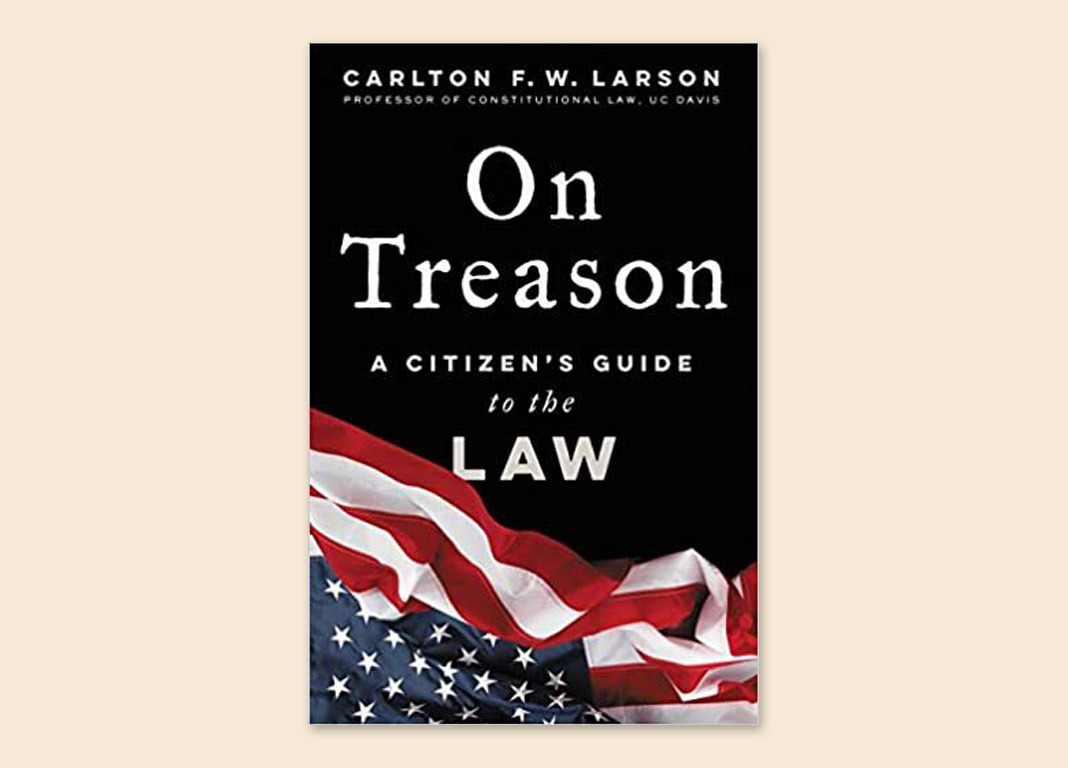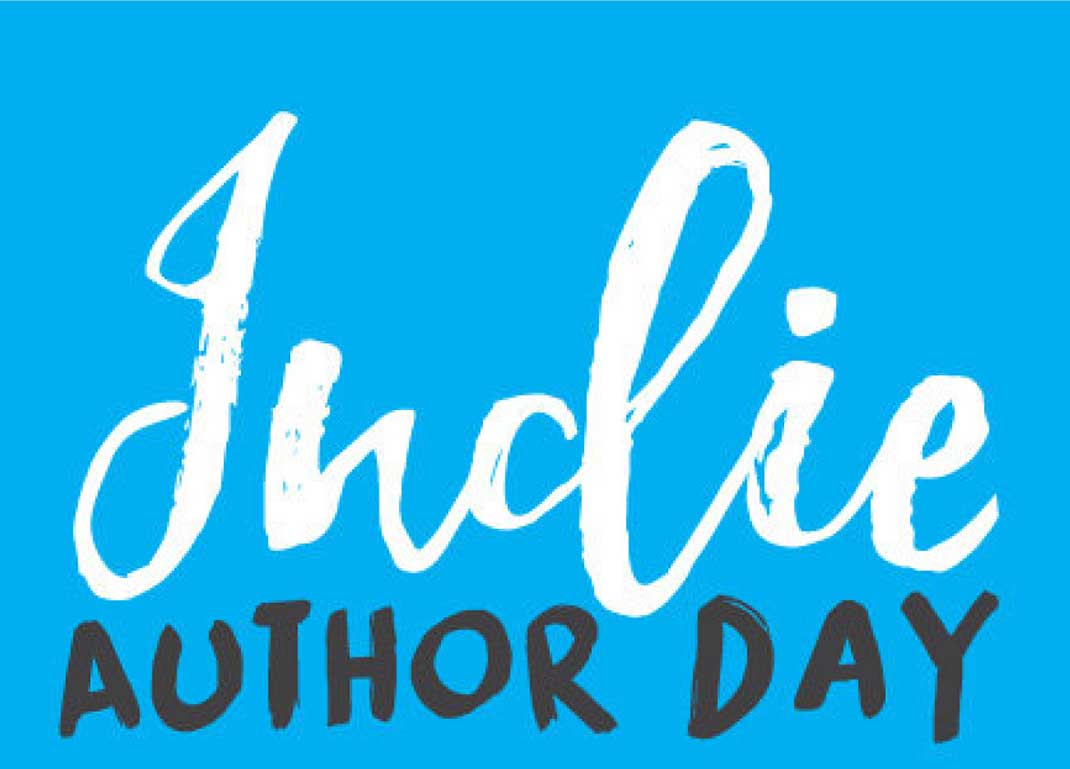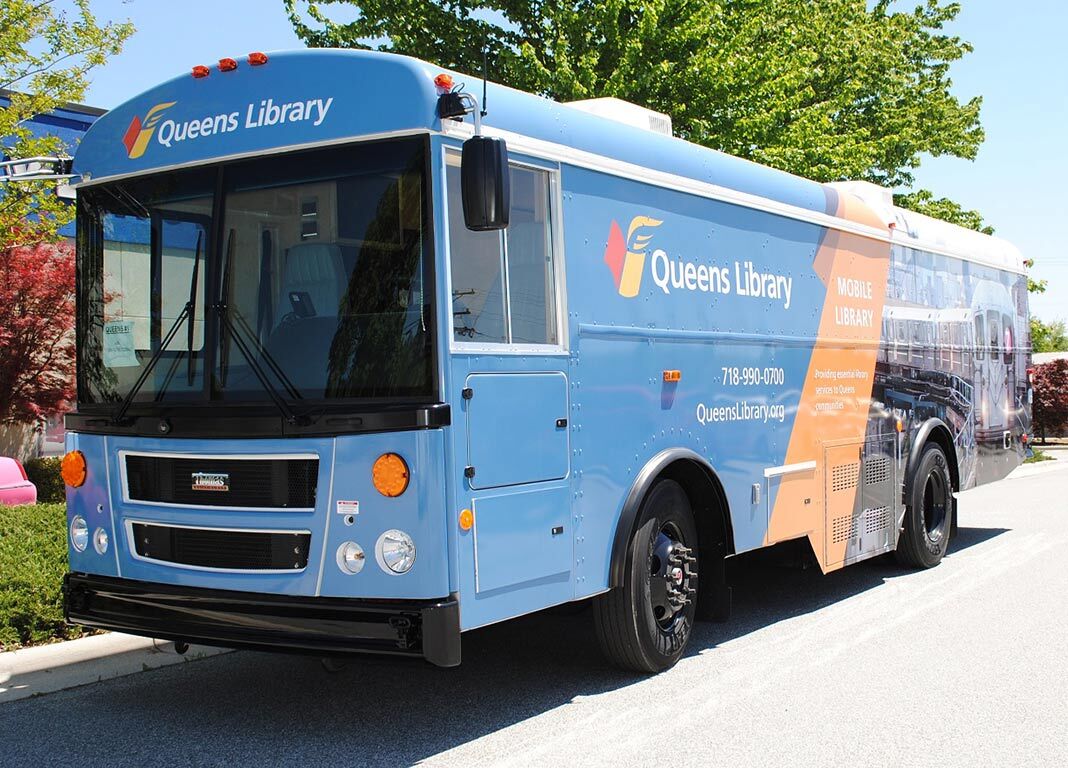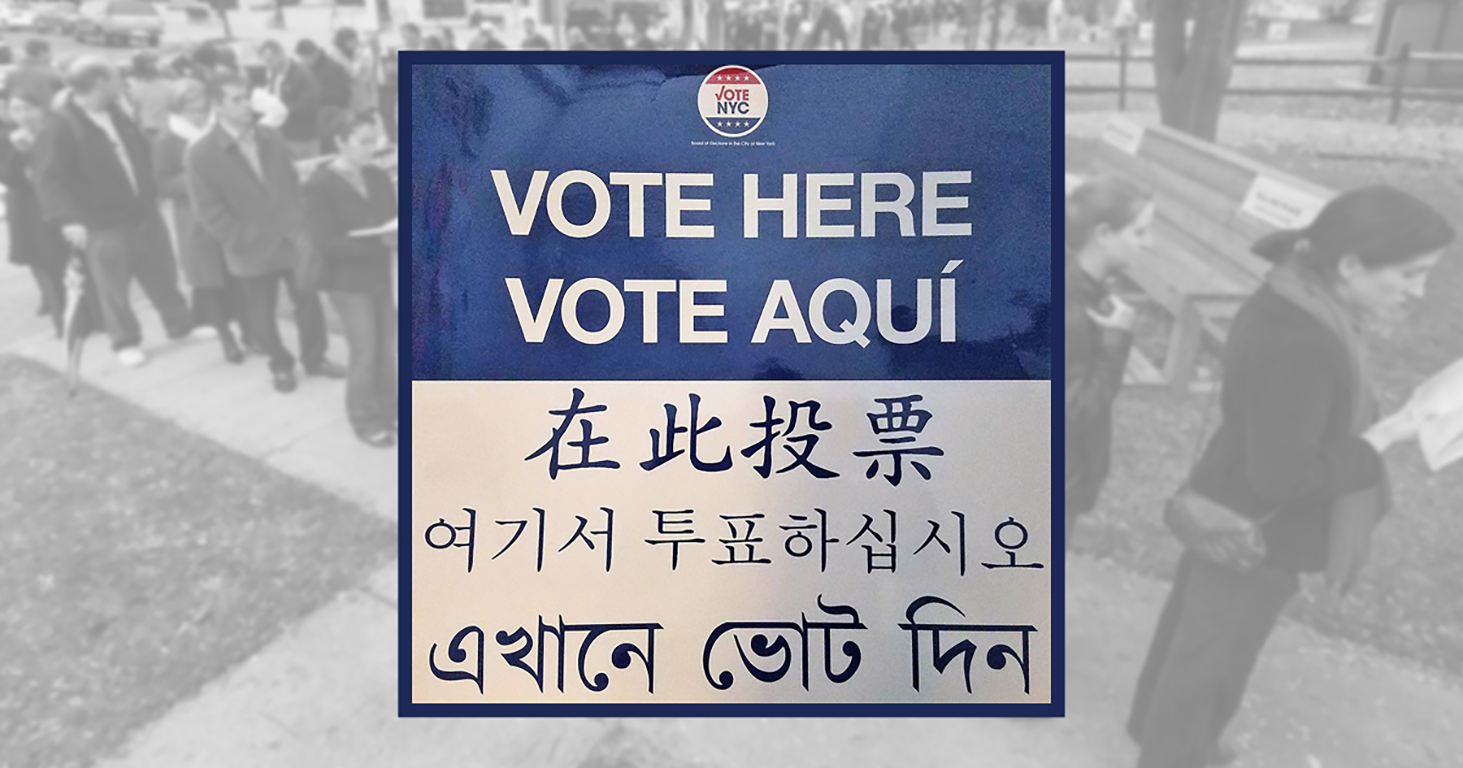Even though we can't host public events at our branches, Langston Hughes Community Library and Cultural Center will still proudly celebrate Kwanzaa for the 36th straight year!
This year, they invite you to a series of virtual programs starting Saturday, December 19.
You can enjoy craft workshops, live music, dance, spoken-word performances, interesting conversations, and more.
Come celebrate family, community, and the Seven Principles with us!
Funding for these programs has been provided in part by the Library Action Committee of Corona-East Elmhurst, discretionary funds from Council Member Francisco Moya, the Friends of Cambria Heights Library, the Friends of Laurelton Library, the Friends of Pomonok Library, Rory Lancman, and the NYS Education Department's Special Legislative grant from Assemblyman Jeffrion Aubry.
Watch these daily Facebook videos explaining each of Nguzo Saba, the Seven Principles of Kwanzaa!
Events Schedule
Saturday Craft Series: Kinara Candle for Kwanzaa
Saturday, December 19, 1PM-2PM
Create a Kinara candle and celebrate the words of Kwanzaa. Materials needed: Scissors, paper plates, markers, paint (in red, black, green, brown, and yellow), two pieces of paper, and glue. Sign up here to join: https://www.eventbrite.com/e/saturday-craft-series-tickets-125523196259
***
Annual Kwanzaa Celebration
Saturday, December 19, 6PM-8PM
Please join our guests Atiba Wilson of Songhai Djeli, Langston Hughes Library Emeritus Executive Director Andrew Jackson (Sekou Molefi Baako), hip hop violinist Shayshahn MacPherson, and the Jamel Gaines Creative Outlet Dance Theatre of Brooklyn for a special musical, dance, and spoken-word performance that will kick off this year’s Kwanzaa Celebration!
Watch the replay on Facebook
Watch the replay on YouTube
***
Curator's Coffee Chat: The Underappreciated Celebration
Tuesday, December 22, 4PM-5PM
Take a deep dive into the history of Kwanzaa and why you should consider celebrating now and in the future with guest JoAnna Gordon. Register here: www.tinyurl.com/coffeechatlh
***
Good for Your Soul: A Cooking Show with Chef Lana Lagomarsini of the Black Chef Movement
Wednesday, December 23, 6PM-7PM
To celebrate Kwanzaa, Chef Lana will show us how to cook West African peanut stew. This stew is flavored with chiles, ginger, and garlic. Chef Lana has been working in NYC kitchens for years and volunteers cooking meals for the Black Chef Movement. Register here: www.tinyurl.com/cookingshowlh
***
Saturday Craft Series: African Kwanzaa Necklace
Saturday, December 26, 1PM-2PM
Create a Kwanzaa-inspired necklace with paper plates, markers, long noodles, small paint brushes, round noodles with holes, glue, paint in red, black, and green, and scissors. Register here: https://www.eventbrite.com/e/saturday-craft-series-tickets-125523196259
***
Celebrating Kwanzaa: Building the Rhythm in Unity
Saturday, December 26, 7PM-8PM
We’re going to “Go back and fetch it” with a musical and dance ensemble. Join us: https://tinyurl.com/buildinglh
***
Celebrating Kwanzaa: Self-Determination: Freedom, the State of Mind
Sunday, December 27, 7PM-8PM
Join artist Sophia Dawson and Black Panther veteran Yasmeen Majid as we explore the progression of Black people in spite of resistance and struggles. Click the link to register to join: https://tinyurl.com/determinationlh
***
Celebrating Kwanzaa Panel: We Are in This Together
Monday, December 28, 7PM-8PM
To celebrate the principle Ujima, please join us in a discussion with Aleeia Abraham and Angie K of the BlaQue Resource Network and The Black Chef Movement. Be prepared to be inspired by their work building and supporting community. Click the link to register to join: https://tinyurl.com/panellh
***
Celebrating Kwanzaa: Financial Literacy Workshop with Wendy Petties
Tuesday, December 29, 7PM-8PM
Get empowered to change your life by practicing good financial habits. Figure out what motivates you money-wise. After this workshop, you will have a clear understanding of financial concepts to make effective decisions. Join here: https://tinyurl.com/financiallh
***
Celebrating Kwanzaa with a Vision Board Workshop
Wednesday, December 30, 7PM-8PM
Reflect on what you've done, and look forward to what you will be, do, and have next. Our vision board party is a purpose-finding, goal-setting event to create a visual of your goals that will inspire you throughout the year. Join here: https://tinyurl.com/visionlh
***
Celebrating Kwanzaa: Kwanzaa Wreath Craft
Thursday, December 31, 7PM-8PM
Learn the techniques and materials needed to create natural and decorative wreaths. Kits for this activity can be picked up after December 19 at Cambria Heights Library or Langston Hughes Library. Link to join us: https://tinyurl.com/kcraftlh
***
Celebrating Kwanzaa: Living Imani
Friday, January 1, 2021, 7PM-8PM
On the last day of Kwanzaa, the principle we celebrate is Imani (Faith). Monique Fortunê will lead us as we come together as a community to express gratitude for the faith that lifts and sustains us. Join here: https://tinyurl.com/livingimanilh
Queens Public Library’s Correctional Outreach, Hip-Hop Programs, Youth Justice Court, and the Queensbridge Tech Lab present Justice Without Barriers Week!
Under the It’s Time for Kind umbrella, our special guests will share their stories and other acts of kindness. These programs and resources are aimed at the formerly incarcerated, their families, and anyone who is interested in supporting and advocating for them.
Our events will include a storytime, job and technology training, a unique DJ set by QPL Hip Hop Coordinator Ralph McDaniels, and more.
Join QPL on all our virtual platforms from Monday, December 7 to Saturday, December 12.
Justice Without Barriers Week: Schedule of Events
Justice Without Barriers Storytime: I Know My Rights: Bill of Rights
Monday, Dec. 7, 6:00pm
Facebook Live
Join us for the kickoff event of Justice Without Barriers Week, a storytime with author Mysonne Linen. He will read his book I Know My Rights: Bill of Rights, which informs readers about the rights that they are guaranteed under the first ten amendments to the U.S. Constitution. QPL President and CEO Dennis M. Walcott will introduce the event, and a young adult will talk with Mysonne about his book. Watch live on our Facebook page.
***
Justice Without Barriers: Live Talk from Queens: Reentry Edition featuring Lance Feurtado
Tuesday, Dec. 8, 6:00pm
Facebook Live
Join QPL Hip Hop Coordinator Ralph McDaniels as he interviews special guest Lance Feurtado. Lance is the founder of the nonprofit King of Kings Foundation and heavily involved in the Queens community. He will also speak on his own experience navigating reentry and give advice to viewers that may be going through similar situations. Watch live on our Facebook page.
***
Justice Without Barriers: Job Search for the Formerly Incarcerated
Wednesday, Dec. 9, 2:00pm
Whether you’ve been recently incarcerated, justice-involved, or are currently on parole or probation, there is a job out there for you! Join us for a workshop on WebEx that will provide resources for your job search.
Join Here: https://queenslib.org/2HyK4Vq
Password: QPLJBA
***
Justice Without Barriers: Boss Moves: How to Start a Business
Thursday, Dec. 10, 6:00pm
Facebook Live
Whether you are looking for additional income or are trying to overcome barriers to reentry, you can start a business. Join QPL's Entrepreneurship Counselor Candid Mack as we provide attendees with the essential tools for starting their own business. You'll learn how to develop your idea, register your business, identify your ideal customers, utilize social media, and much more! Watch live on our Facebook page.
***
Justice Without Barriers: Boss Moves: Build Graphics for Your Brand
Friday, Dec. 11, 1:30pm
Learn how to use Canva, one of the leading browser-based design platforms. Canva makes it easy to create simple graphics for social media and businesses. Using Canva is free and helps many entrepreneurs jumpstart their brand through consistent and contemporary visual identity.
Join us for this workshop on WebEx at https://queenslib.org/3lYWPHI
Password: QPLJBA
***
Justice Without Barriers: What Justice Means to Me
Friday, Dec. 11, 6:00pm
Facebook Live
The Youth Justice Courts from the Queens Public Library for Teens, Central Library Teen Space, Cambria Heights Library, and Laurelton Library, along with the Queens Defenders, invite you to an evening focused on how young adults view youth justice. You will be introduced to the Queens Public Library Youth Justice Court program, hear from guest speakers, and also hear directly from the teens currently enrolled in the program. Watch live on our Facebook page.
***
Justice Without Barriers: Music for Social Justice with Ralph McDaniels
Saturday, Dec. 12, 1:00pm
Instagram Live
Tune in live on our Instagram page as QPL Hip Hop Coordinator Ralph McDaniels plays music for social justice. Special guests may join us! Watch live on our Instagram page.
On Tuesday, November 17, Queens Memory streamed a program called "Power and Oppression in the Archive: Building a Diverse Historical Record through Oral History." This program was the last panel in a three-part series, titled “How Can We Do Better? Creating a More Just and Inclusive Future.” The panel was moderated by James Lowry and featured Cynthia Tobar from Bronx Community College and Obden Mondesir from Queens College. Lowry, assistant professor at the Graduate School of Library and Information Studies, Queens College, led a fascinating discussion between Tobar, head of archives and assistant professor at Bronx Community College, and Mondesir, who is an outreach archivist at Queens College. Lowry began with an acknowledgement that their work takes place on land where indigenous people have been dispossessed.
Tobar is interested in creating inclusive community-based archives that validate marginalized narratives and include them in history. She explained that Bronx Community College, founded in 1957, serves a low-income immigrant population of students from over 100 countries who are 96% ethnic minorities and 2/3 are first-generation. The oral history project Raising Ourselves Up sought to make these students participants in the history they were creating and to inspire resilience. Tobar described archives as serving a gatekeeping function, able to determine what counts as history. When developing archives, she seeks to counter traditional storytelling with oral history and participatory action so that students can understand their stories of inequity in education. Archival power, she explained, is a vessel and resistance tool. She wants to broaden the frame of history, strengthen students’ sense of belonging, use resistance methodology in education, involve students in knowledge creation, increase their access to education, and fight for more equitable futures. Asked by Lowry how archives are complicit, she described them as the stepsisters of historians, having a hierarchical structure and white European lens.
Mondesir described his involvement in the SEEK (Search for Education, Elevation, and Knowledge) oral history project, documenting a program that offers academic support to those who wouldn’t have made it otherwise at CUNY. Mondesir’s work in the SEEK oral history project sought to reconstruct history; he described how silences in archives are where oppression exists. Archives are where facts are assembled and sources are created; which stories are venerated and which are omitted? Which do we praise and which don’t we talk about? He said racial capitalism can lead to easily discussed stories being prioritized and a dearth of sources about other stories. He explained how it is important for black, indigenous, and people of color to be centered as subjects of their own liberation. SEEK, he noted, was at one time managed by whites though it served mostly black students, who sought autonomy for the program. Hearing about SEEK directly helped him understand nuances of the civil rights movement. “Archives don’t have complete authority over the past,” he said, explaining that oral history, as it brings in many voices, is a democratic force. What’s most important is collecting the subjective truth, and that participants investigate the story they are telling, rather than tell the story they’ve already told everyone. ”Ambiguity,” he asserted, “is a part of everyone and everything.” Both Tobar and Mondesir were optimistic about the role of oral history in creating a more diverse and complete historical record in archives. This program was sponsored by the Center for Ethnic, Racial, and Religious Understanding [CERRU], Queens Memory COVID-19 Project of Queens College and Queens Public Library, the Office of the Vice President for Student Affairs, Percy Ellis Sutton SEEK Program, and the Queens College Black Latinx Faculty Staff Association (BLFSA).
This program can be found on Aviary here.
Statement by Queens Public Library President and CEO Dennis M. Walcott on the Passing of Mayor David N. Dinkins
“Mayor Dinkins gave New Yorkers the gifts of learning, literacy, and opportunity by increasing the City’s investment in public libraries, even in the face of extremely tough budget choices. He led the City with compassion and empathy for every individual, always treating them with courtesy, dignity, and respect. I had the honor of knowing this great man for over 35 years. He was a mentor and a friend, and I will miss him dearly."
Pictured: Google’s Head of External Affairs for New York William Floyd, Queens Public Library Trustee the Honorable Augustus C. Agate, Mayor David Dinkins, and QPL President and CEO Dennis M. Walcott at QPL's Google CS First kickoff event in June 2016.
Queens Public Library And Queens Defenders Form Partnership To Equip Parolees Released From Prison During The Covid-19 Pandemic With Smartphones, Data Plans And Other Tech Resources
Funded Through a $330,000 Federal CARES Act Grant for Museums and Libraries, the “Immediate Access: Technology Re-entry Program” Will Assist 75 Individuals Over Two Years
Queens, NY (November 10, 2020)—Queens Public Library and Queens Defenders have formed a partnership to offer a tech-focused program to help parolees overcome the challenges they face following their release from correctional facilities during the ongoing COVID-19 pandemic.
Re-entry of former inmates—who had no access to technology while incarcerated—is challenging, especially for those who have been imprisoned for decades. The COVID-19 pandemic has added new barriers to this already difficult transition.
As part of the “Immediate Access: Technology Re-entry Program,” the parolees recently released from prison will receive smartphones to connect them to online resources and services to assist them with re-entry, ranging from the Library's virtual programing and financial and transportation apps to online certification programs. They will also receive a data plan, technology assistance, and job training to equip them with the information, skills, and resources they need to help them move forward on the outside.
All participants will have access to QPL-created resources, including its Re-entry Resource Guide, and assistance from the Library’s Job and Business Academy and its Queensbridge Tech Lab at the Queensbridge housing complex in Long Island City. In addition, QPL staff will design a skills training and job certification curriculum for each individual.
The program, which will assist 75 formerly incarcerated individuals over a two-year period, is funded with more than $330,000 from the CARES Act Grants for Museums and Libraries, awarded to QPL and QD by the Institute of Museum and Library Service (IMLS). QPL and QD are among the 68 grant recipients selected from more than 1,700 applicants.
“The COVID-19 pandemic has made the transition from life inside a correctional facility to life on the outside especially challenging,” said QPL President and CEO Dennis M. Walcott. “Our joint program with Queens Defenders will provide formerly incarcerated individuals with tools allowing them to take advantage of learning opportunities available at the Library and beyond, helping them connect with their communities and realize their full potential. We are grateful to Queens Defenders for partnering with us to develop this important initiative and to the Institute of Museum and Library Services for awarding us this grant.”
“Queens Defenders is honored to partner with the Queens Public Library on this grant award from the Institute of Museum and Library Services to address the needs of individuals moving out of incarceration and into the community – a transition made even more challenging by the COVID-19 pandemic,” said Queens Defenders Executive Director and Founder Lori Zeno. “This technology-focused initiative will help individuals re-establish themselves in the community as they aspire to lead productive lives free of further justice-system involvement. We look forward to sharing lessons learned so more individuals re-entering society from incarceration can benefit from the supports and access to technology offered through this program.”
Queens Public Library has worked with Queens Defenders on a number of prior initiatives, including the Youth Justice Court, which empowers youths while they help their peers from the community avoid school suspension, criminal and family court appearances, and potential violations of probation. The program, offered at four QPL locations—Cambria Heights, Laurelton, Central and the Queens Public Library for Teens in Far Rockaway—has resumed virtually in November.
QPL has a dedicated, trained team of staff members who assist formerly justice-involved individuals as they transition back into society, helping them obtain a library card, teaching them job skills and directing to job search resources, technology workshops and literacy programs.
About Queens Public Library
Queens Public Library is one of the largest and busiest public library systems in the United States, dedicated to serving the most ethnically and culturally diverse area in the country. An independent, non-profit organization founded in 1896, Queens Public Library offers free access to a collection of more than 5 million books and other materials in multiple languages, technology and digital resources, and more than 87,500 educational, cultural, and civic programs a year. It consists of 66 locations, including branch libraries, a Central Library, seven adult learning centers, a technology lab, one universal pre-kindergartens, and two teen centers.
About Queens Defenders
Queens Defenders (formerly Queens Law Associates) provides free, high-quality legal representation to individuals living in Queens County. Since 1996, Queens Defenders’ highly skilled attorneys have represented over 450,000 Queens residents and handle major trials and homicides, work with clients involved in Queens treatment courts, and represent cases involving domestic violence, youth charged with felonies, and immigrants facing criminal charges. In 2013, the organization launched youth diversion programs to help young people develop critical life skills, improve emotional and physical health, and enhance educational and professional opportunities to build successful lives. Learn more at queensdefenders.org.
Contact: Queens Public Library—Ewa Kern-Jedrychowska; Queens Defenders—Alora Sherbert
###
Every Thursday, the library hosts an author for its Literary Thursdays program. On November 5, our guest was Carlton F.W. Larson, Martin Luther King, Jr. Professor of Law at the University of California, Davis, School of Law and leading treason scholar. Larson’s new book, On Treason: A Citizen’s Guide to the Law, explains the subject of treason to the layperson. Larson commented that treason has become part of the national conversation in the past few years with some accusing President Trump of it and with President Trump accusing James Comey, Barack Obama, and Joe Biden of it. In this unique historical moment, Larson heard a lot of talk about the subject he studies and saw the opportunity to inform the public about it. His book is structured as alternating chapters of law and history.
Treason is defined in the United States Constitution, Article 3, Section 3, and is remarkably narrow. It is the only crime defined by the Constitution. According to the Constitution, treason is the act of levying war against the United States or providing aid and comfort to the enemies of the United States. It can only be proven by two witnesses to the same overt act or confession in open court. These parameters mean that, despite what some may think, the alleged act of working with or for Russia would not constitute treason. Furthermore, many modern acts that one might think of as treason that take place as a person using a computer are not easily proven as treason due to lack of witnesses. Larson explained that the American definition of treason comes from the 1351 English statute of treason that sought to limit its definition. At the time, treason was linked with inheritance of land. Anyone who was guilty of a felony surrendered their land to the next lord, but anyone guilty of treason forfeited their land to the king. Thus, the parliament wanted to define the crime as narrowly as possible to prevent such forfeiture. In that era, there was also high and petty treason, with high treason being an offense against the state and petty treason being a crime such as a wife or servant killing a master.
The framers of the Constitution did not want political dissent to be an offense of treason. Hence, their desire was to have a restrictive definition. However, Larson explained that the Supreme Court has opined that while the treason clause seems clear and simple superficially, it is packed with controversy. Levying war against the United States – for example, an army during the Civil War – must be an attempt to overthrow the government overall, not to change a law. The clause probably intended that a group levy war, not an individual. But, as Larson pointed out, we now have technology that makes it possible for individuals to levy war against the state – for example, an individual with a suitcase containing a nuclear weapon. As for giving aid and comfort to enemies, Larson gave another hypothetical example. Imagine a Secretary of Defense gave nuclear secrets to China and China paid him for them. This would not be treason because aiding foreign countries is not treason – only aiding enemies that we are in a state of war with can be considered. Larson named Al Qaeda, the Taliban, and ISIL as possible enemies that we would be considered in a state of war with for the purposes of the treason clause. Yet, other disloyalty laws could apply to a Secretary of Defense’s actions – for example, espionage. He provided the example of the Rosenbergs, who were not tried for treason because we were not in a state of open war with the Soviet Union. Rather, they were convicted of conspiracy to commit espionage.
Another angle to treason law that Larson discussed is who is subject to the treason clause. Treason is considered a breach of allegiance. There are multiple types of allegiance – citizens would be subject to permanent allegiance while citizens of other countries could commit a breach of allegiance, as they owe temporary allegiance to the United States while living here. Larson introduced the little-known case of Hipolito Salazar, who the United States hanged in Taos in 1847 as a traitor and is in fact the only person executed for treason under federal law since the ratification of the Constitution. But, this was an error as Salazar was in Mexico at the time and was a Mexican citizen. He owed no allegiance to the United States. New Mexico was not a part of the United States at the time; it was occupied during the Mexican-American War.
There is also the crime of treason against a state government, if one tries to overthrow it. John Brown, who invaded Virginia, is the only person to have been executed for the crime of treason against a state government. Larson also shared the story of the Mine Wars in the 1920s, the largest insurrection since the Civil War, when 8000 miners marched to save fellow miners who were imprisoned during a coal strike. As a counter force, 3000 men and aircraft were sent. There was an attempt to prosecute the leaders of the miners for treason against the state of West Virginia. He gave the example of the recent plot to kidnap the governor of Michigan as a crime that could potentially be charged as treason against the state of Michigan.
Larson’s presentation showed how complex the law of treason is, despite its short length in the Constitution. It also demonstrated why this crime is so rare, despite how much it may have been discussed recently.
On Treason: A Citizen's Guide to the Law is available in both eBook and print book format from Queens Public Library.
Join us for our virtual celebration of Indie Author Day, the annual event which brings local writing and reading communities together.
Our special online events will include readings by local authors of children's and adult prose and poetry and the workshop "Publishing Practice in the Digital Age" with publisher and multidisciplinary artist Elæ.
Tune in live on our YouTube channel on Saturday, November 14 starting at 11:30AM!
See other resources from National Indie Author Day 2020
QPL Indie Author Day 2020 Schedule
Meet the Authors
11:30AM-1:30PM
Diana Lee Santamaria
11:30AM-12:00PM
Award-winning children’s author and educator Diana Lee Santamaria will read from her book DLee’s Snow Day, one of six in the DLee’s World Preschool Learning Series geared to promote early literacy, diversity, and fun! Join her as she reads, sings songs, and gives us a sneak peak into her newest book, DLee’s Shapely Imagination. Learn More at https://www.dleesworld.com.
Elaine Donadio
12:00-12:30PM
An author and reading specialist at New York City schools, Elaine Donadio is a New York City girl by birth and by choice. Her books will take you on a path that gently leads to what you previously did not know. Like a flower blooming in unhurried stages, you'll learn about our world in the context of personal experience. Readers will learn and laugh at the same time. The Science Project is a story of eleven-year-old Nestor Ramirez, who gets a big kick out of teasing his classmates. Learn More about Elaine at https://elainedonadiowrites.wordpress.com.
Crystal Wolfe
12:30-1:00PM
Award-winning author Crystal Wolfe will read the Prologue from her first novel in The Creation Series, Where the Shadows Meet the Light, an epic fantasy series with elements of science fiction. She will show a video teaser for this novel and also talk about her our book Our Invisible Neighbors, which was inspired by her nonprofit work with Catering for the Homeless, Inc. A portion of all her book proceeds goes toward feeding the homeless and families in need. Learn More at https://www.cateringforthehomeless.com.
Vijay R. Nathan
1:00-1:30PM
Vijay R. Nathan will read Celebrity Sadhana, Or How to Meditate with a Hammer, a series of poems aimed to imagine meditative moments from the sadhana (spiritual practice) of Hollywood's elite. He builds on wisdom traditions to bring the hammer down on complacent notions about what it means to be spiritual in today's world. Vijay is a supervising librarian at QPL and host of the live talk show The Truth to Power Show, which streams online on Radio Free Brooklyn. He has published two poetry collections, Escape from Samsara (2016) and Celebrity Sadhana (2018). Vijay has been published by Newtown Literary, Oddball Magazine, Meow Meow Pow Pow Lit, and Fearsome Critters. Learn More about Vijay at https://vijayrnathan.com/poetry.
UPDATE: Carol Basdeo was scheduled to join us today, but she unfortunately has another commitment. We hope she will join us in the future for another reading! You can learn more about Carol and her work at https://www.carolbasdeo.com.
Workshop: Publishing Practice in the Digital Age
1:30PM-2:30PM
Join us for this session with Elæ as we consider the ways in which publishing is evolving in relationship to digital media and what this means for writers at every stage of their journey. We will discuss the question of an uncertain landscape that impacts every part of the chain, from writer to publisher to distributor to bookseller to reader. We will think together through strategies for self-publishing and traditional publishing, online and off.
Elæ (Lynne DeSilva-Johnson) is the Founder and Creative Director of The Operating System & Liminal Lab. They are a publisher, multidisciplinary artist, curator, scholar, and professor at Pratt Institute. Elæ performs and publishes widely, and produces a range of creative and educational public programming across sectors. Learn More at http://www.theoperatingsystem.org.
Every Thursday at 4pm, the Library hosts a guest author for Literary Thursdays. On Thursday, October 22, our guest was Margaret Andersen, the Edward F. and Elizabeth Goodman Rosenberg Professor Emeritus of Sociology from the University of Delaware. Andersen’s latest book, Getting Smart about Race: An American Conversation, was published this past winter. Andersen began by expressing how much the killing of George Floyd and the coronavirus pandemic have laid bare the reality of racism in this country. Black and Latino individuals are three times more likely to be infected and two times more likely to die from COVID-19. Those marching against systemic racism beginning in May 2020 put our nation’s twin pandemic of COVID-19 and racism at the forefront of our media; Andersen asked, are we ready for a racial reckoning? She described how certain symbols of racism were excised: Aunt Jemima from pancake syrup and the Redskins from a football team’s name. But changing symbols is not enough: we need new policies and we all have a responsibility to use our talent and resources to make them happen.
Perhaps more importantly than the changing of symbols, she said, Joe Biden named Kamala Harris, a multiracial woman, to his vice presidential spot on his ticket, making her the first African American woman on a major presidential ticket. Is this, Andersen wondered, the moment we’ll finally get smarter about race? She noted that bestseller lists have been packed with books about race, indicating people may be educating themselves about the topic, but asked whether the nation will have the will to change.
Another question Andersen raised is whether the United States will move beyond the black-white model and consider the experiences of Hispanics, Asian Americans, and Native Americans. Her book, she explained, emphasizes there are three important things for each of us to pay attention to and try to put into action: recognize how racism is built into society, call it out, and do something about it. Racism, she said, is not the same as prejudice. While prejudice is an attitude, racism is a system that advantages whites and disadvantages others. Race as a social construct was specifically created to justify oppression; as an example, she gave Hitler’s creation of Jewish as a race. Race is invented to support inequality. While racists often claim there are fundamental physical differences, the Genome Project has proved that there is no such thing as a race gene. Race has political, economic, and cultural dimensions. For example, Andersen discussed the census and how race is collected on it. The categories of race and ethnicity have changed over time, and for a long time race was indicated only by the census taker’s observations.
As much as we should be horrified by the resurgence of white supremacy, Andersen said, do not be distracted from more covert forms of racism. Racism impacts everyday interactions even when no prejudice is expressed. What happened in the past, she said, reverberates in the present and advantages whites who demonstrate no prejudice. She also discussed the practice of redlining in the housing market, and showed how it has affected the accumulation of wealth and the median net worth of different races. Additionally, whites are three times more likely to receive an inheritance. These factors can influence whether a household is able to sustain a crisis, such as the economic or health crises we are seeing because of COVID-19. In May 2020, 28% of African Americans had to defer mortgage payments compared with 9% of whites.
Andersen encouraged the audience to recognize the reality of racism and not avoid talking about it. She shared her own childhood experience of growing up in segregated schools in both Rome, Georgia and Boston, Massachusetts and how that made her curious about race. Segregation, she said, is the enemy of overcoming racism. Contact between groups shatters stereotypes. While race is a social construct, it is real in terms of our identities and the impact race has on society. You can’t get to colorblind, she said, by ignoring race.
Getting Smart about Race is available as both a book and an eBook from Queens Public Library.
It’s back...the mobile library will be touring Queens.
Visit the mobile library’s walk-up window to sign up for a library card and more! Learn about how to attend virtual programs, how to reserve a book, and how to chat with a librarian. Get a free gift!
For your health and safety, there is no browsing on the bus and the bus is not accepting book returns at this time.
Mobile Library Schedule:
Thursday, October 29, 1:30-4pm: Beach 116th Street (Near the Beach)
Thursday, November 5, 1:30-4pm: Queens County Farm Museum (Little Neck Parkway & 71 Avenue)
Tuesday, November 10, 1:30-4pm: Queens Bridge Park (Vernon Blvd. & 41 Avenue)
Tuesday, November 17, 1:30-4pm: Brookville Park (Brookville Blvd. & Mayda Road)
Wednesday, November 18, 1:30-4pm: La Jornada/Together We Can Food Pantry at the Queens Museum (Queens Museum North Parking Lot, Flushing Meadows Corona Park)
Thursday, November 19, 1:30-4pm: Juniper Park (Juniper Blvd. South & 80th Street)
Tuesday, December 1, 1:30-4pm: Jamaica Colosseum Mall (Jamaica Avenue & 165th Street)
Tags
All Queens Public Library locations providing to-go service will be closed on Election Day, Tuesday, November 3, 2020. QPL's telephone reference and Chat with a Librarian services will also be unavailable.
Although the Library will be closed, several of our branches will still serve as polling sites that day.
Queens residents will cast their votes at the Briarwood, Central, East Elmhurst, Elmhurst, Forest Hills, Kew Gardens Hills, Lefferts, Lefrak City, North Forest Park, Peninsula, Ridgewood, St. Albans, and Seaside libraries, from 6AM to 9PM.
In addition, our Jackson Heights branch is an early voting site through Sunday, November 1st.
Is your library where you should vote? Please visit https://nyc.pollsitelocator.com/search or call 866-VOTE-NYC (866-868-3692) to confirm the correct location for you to vote in your neighborhood.
If you have other questions about voting, please visit our special voting FAQs blog post.
Please make sure that your voice is heard—make sure that you vote!
